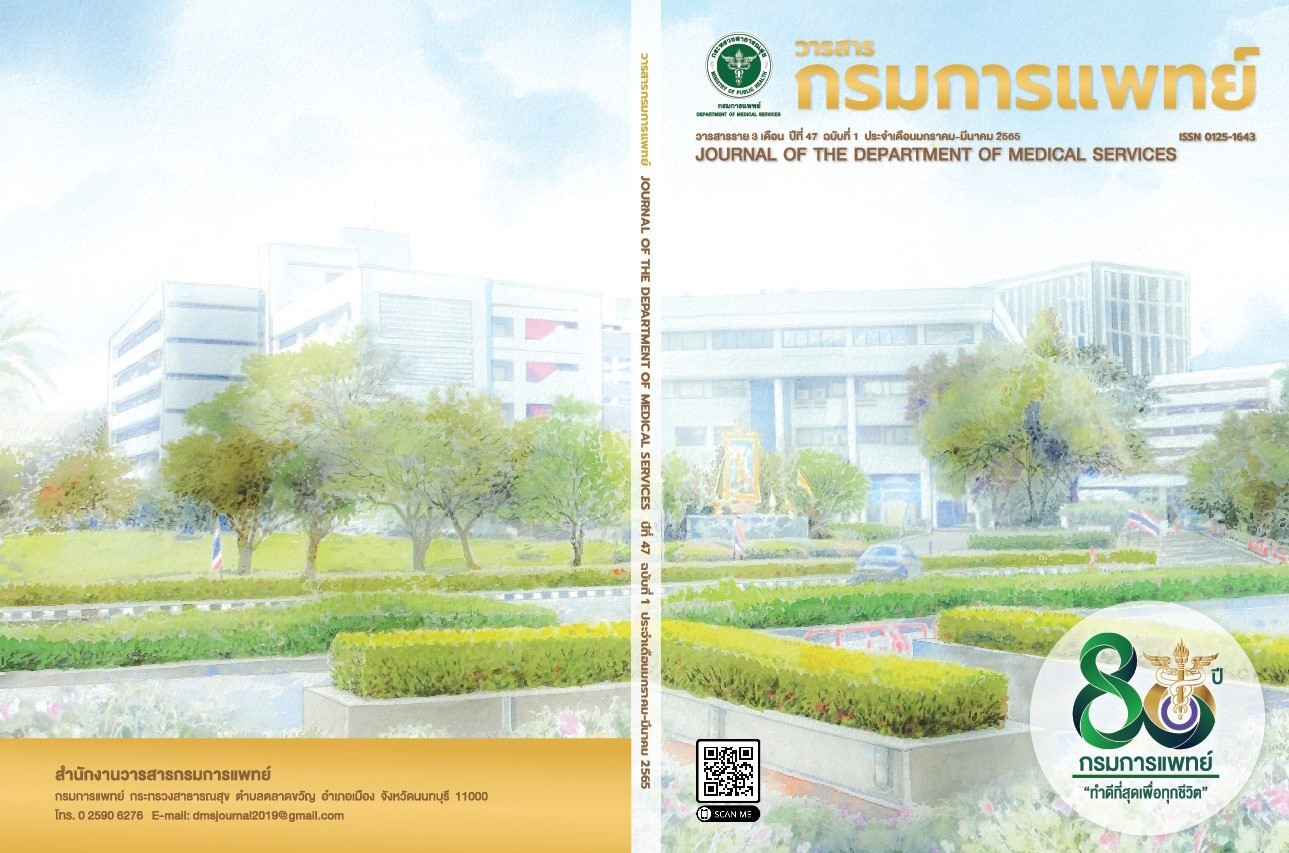Clinical presentations and outcomes of digoxin intoxicated patients
Keywords:
digoxin toxicity, digitalis toxicity, atrial fibrillation, complete heart blockAbstract
Background: A recent report from Holmes suggested that the optimal screening age should be around five years old. The preschool vision screening is essential and should be included in the vision screening program in Thailand. The objective of this study was to assess the agreement of the interpretation of preschool visual acuity among doctor screeners and a teacher screener. Methods: The study was performed between August and October 2011. Preschool children aged between 36 and 72 months old from 3 Child Care Centres (CCC) were enrolled. All participants were tested for visual acuity (VA) by a combination of the following screeners: a third-year resident, a teacher from one of the CCCs who has been trained in VA measurement, and two ophthalmologists each with over 10 years’ experience. The VA measurement was carried out in pairs as follows: an ophthalmologist with the resident, an ophthalmologist with the teacher and the resident with the teacher. Results: Two hundred and sixty-four eyes (132 patients) met the criteria. The mean age of the preschool children was 43.71±4.54 months (range, 51-36 months). The agreement rates among the three pairs that carried out VA screening were excellent (k=0.81), moderate (k=0.63) and good (k=0.75) respectively. Conclusion: A teacher trained in VA measurement reliably measured VA in preschool children when compared to ophthalmologists.
References
Ismail N. Digitalis (cardiac glycoside) intoxication [Internet].2008[cited 2008 Jan 23]; available from https://www.uptodate.com/contents/digitalis-cardiac-glycoside-intoxication.
Poole-Wilson PA, Opie LH. Acute and Chronic Heart Failure:Positive Inotropes, Vasodilators, and Digoxin. In: Opie LH, GershBJ, editors. Drugs for the heart. 7th ed. Philadelphia: SaudersElsevier; 2009. p.160-97.
Yancy CW, Jessup M, Bozkurt B, Butler J, Casey DE Jr, DraznerMH et al. ACCF/AHA guideline for the management of heartfailure. J Am Coll Cardiol. 2013;62(16):e147-239.
Ponikowski P, Voors AA, Anker SD, Bueno H, Cleland JG, Coats AJet al. ESC Guidelines for the diagnosis and treatment of acuteand chronic heart failure. Eur Heart J. 2016;37(27):2129-200.
January CT, Wann LS, Alpert JS, Calkins H, Cigarroa JE, Cleveland JC Jr et al. AHA/ACC/HRS guideline for the management of patients with atrial fibrillation. J Am Coll Cardiol. 2014;64(21):e1-76.
Kirchhof P, Benussi S, Kotecha D, Ahlsson A, Atar D, Casadei B et al. ESC Guidelines for the management of atrial fibrillation. Eur Heart J. 2016;37(38):2893-962.
Bauer LA. Clinical Pharmacokinetics Handbook International Edition. USA: The McGraw-Hill Companies, Inc; 2006.
Jitapunkul S, Kongsawat V, Sutheparak S. Digoxin toxicity in Thai medical patients: clinical manifestations and an appropriate diagnostic serum level. Southeast Asian J Trop Med Public Health. 2002;33(3):608-12.
Goldberger AL. Basic approach to arrhythmias due to digitalis toxicity [Internet]. 2008 [cited 2008]; available from https://www.uptodate.com/contents/basic-approach-to-arrhythmias-due-todigitalis-toxicity.
Ma G, Brady WJ, Pollack M, Chan TC. Electrocardiographic manifestations: digitalis toxicity. J Emerg Med. 2001;20(2):145-52.
Abad-Santos F, Carcas AJ, Ibáñez C, Frías J. Digoxin level and clinical manifestations as determinants in the diagnosis of digoxin
toxicity. Ther Drug Monit. 2000;22(2):163-8.
Downloads
Published
How to Cite
Issue
Section
License
Copyright (c) 2022 Department of Medical Services, Ministry of Public Health

This work is licensed under a Creative Commons Attribution-NonCommercial-NoDerivatives 4.0 International License.
บทความที่ได้รับการตีพิมพ์เป็นลิขสิทธิ์ของกรมการแพทย์ กระทรวงสาธารณสุข
ข้อความและข้อคิดเห็นต่างๆ เป็นของผู้เขียนบทความ ไม่ใช่ความเห็นของกองบรรณาธิการหรือของวารสารกรมการแพทย์



